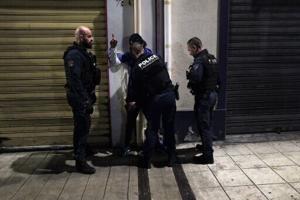A contentious debate is currently unfolding across France as numerous cities implement temporary curfews for teenagers in a proactive effort to combat a visible surge in youth violence. This widespread adoption of restrictive measures, aimed at bolstering public safety, has sparked considerable discussion among local authorities, residents, and human rights advocates regarding their overall effectiveness and ethical implications.
In the southern metropolis of Nimes, for instance, a temporary night-time ban has been enforced for children under 16, directly in response to a recent spate of urban violence that local officials have explicitly linked to escalating drug trafficking activities. This targeted intervention underscores the urgency felt by municipalities to regain control over public spaces and deter illicit behaviors among younger populations.
Further north, in Triel-sur-Seine, a similar curfew has been introduced, extending to individuals under 18. This measure follows a series of disturbing incidents involving widespread damage to public property and instances of theft, prompting authorities to seek immediate remedies to restore order and protect community assets from youth crime and vandalism.
The trend of imposing juvenile curfews is steadily gaining traction across a diverse political spectrum of French towns, reflecting a broad consensus among authorities to directly address the perceived rise in problem behavior among adolescents. Regardless of their specific political leanings, mayors are increasingly exploring these legal actions as a means to respond decisively to community concerns about public safety.
Beyond Nimes and Triel-sur-Seine, other significant urban centers have similarly adopted comparable bans, including Beziers in the south, Saint-Ouen-sur-Seine north of Paris, and Villecresnes in the southeastern suburbs of the French capital. This geographical spread highlights the national scope of the issue and the varied local responses to social issues related to youth.
Recent statistics from the interior ministry underscore the gravity of the situation, indicating that a notable percentage of crimes last year, particularly over a third of violent robberies without weapons, were attributed to suspects aged between 13 and 17. While French law enforcement officers initially prioritize discussions with teens about the night-time ban, direct reports to the judiciary have not consistently deterred reoffending, posing a significant challenge to current criminal justice strategies.
Despite the implementation of these curfews, their true impact remains a subject of considerable debate, even among the very officials who enforce them. The mayor of Pennes-Mirabeau, for example, openly questioned the effectiveness of such bans, citing difficulties in quantifying their success. Simultaneously, Nathalie Tehio, head of the French Human Rights League, has vocally advocated for the development of comprehensive “educational measures” as a more constructive alternative to what she describes as “repressive” bans, emphasizing the need for preventative social policy approaches over punitive ones.
This ongoing discourse illuminates the complex challenge facing French government and communities: how to effectively balance the imperative of community safety with the fundamental rights and developmental needs of young people. The effectiveness of these curfews continues to be evaluated, with many stakeholders calling for holistic approaches that address the root causes of youth violence rather than solely relying on restrictive measures.






Leave a Reply